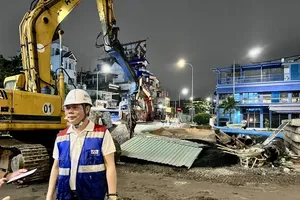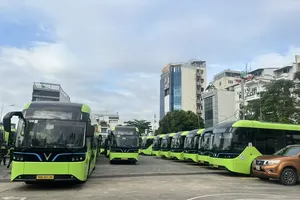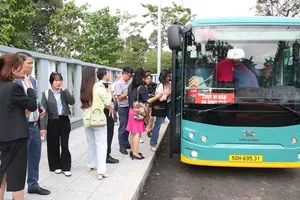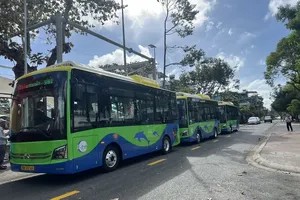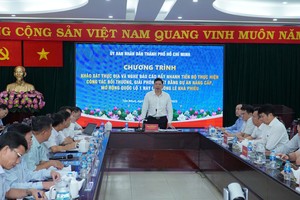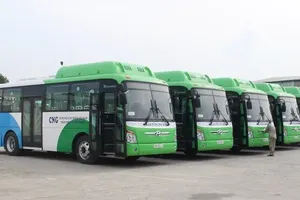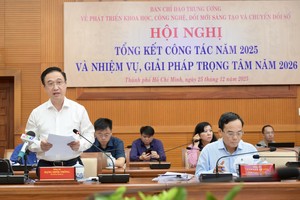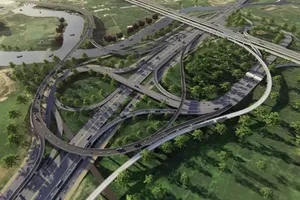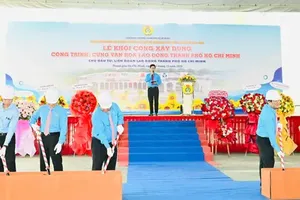
Observations in many streets of HCMC reveal a harsh reality for urban trees. In Tran Phu Street, for instance, many tree roots are encased in concrete pavements, leaving them with little room to grow. Numerous trees on Nguyen Chi Thanh Street, with diameters of 30-40 cm, are burdened with advertising signs and wrapped in electrical wires by nearby businesses. This trend is prevalent across the city, severely hindering tree growth.
Urbanization has also led to a significant decline in green spaces. Even in the city center, where there is significant investment in landscaping, newly planted trees cannot compensate for the loss of older ones. Ton Duc Thang Street in District 1, once renowned for its shady canopy, has lost many of its ancient trees due to the Thu Thiem 2 bridge project.
The upcoming Metro Line 2 project (from District 1 to District 12) will see the removal of 404 trees along routes like Le Lai, Pham Hong Thai, Suong Nguyet Anh, and Cach Mang Thang 8, including valuable species like black star, crepe myrtle, and ironwood.
Experts attribute tree falls during strong wind or heavy rain to their restricted growth, often caused by concrete and pavement encroachment on their root systems. The HCMC Construction Department reported nearly 1,790 fallen trees from 2021 to September 2024, citing various causes including storms, construction, and underground utility work.
Some incidents were due to previous root damage. Since 2012, the city has recorded 12 tree-related accidents resulting in 13 fatalities. In 2024 alone, four incidents of tree failure have caused five deaths.
Public opinion suggests that excessive tree pruning is both counterproductive and unscientific. This approach has led to a decline in green spaces and a deterioration of the living environment.
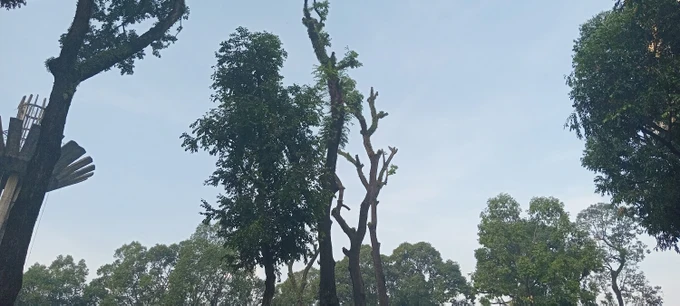
Director Le Cong Phuong of HCMC Greenery Parks Co. Ltd. acknowledges the mixed reactions to the company's pruning practices. He explains that aggressive pruning is necessary to ensure public safety. However, this often results in a loss of shade and aesthetic appeal. The pruning process considers appropriate heights and dimensions, with all actions reported to management authorities.
Deputy Director Dang Phu Thanh of the HCMC Department of Construction admitted the ongoing challenges in tree maintenance. Specifically, many mature trees have grown beyond the reach of available maintenance equipment.
The aging heritage tree system shows declining resilience to current urban conditions, presenting increasing risks of branch and trunk failure. Tree removal and replacement can only be implemented gradually, prioritizing individual trees based on risk assessment.
From a scientific perspective, Dr Dinh Quang Diep, former head of the Landscape and Horticultural Techniques Department at Nong Lam University, analyzed that while safety-motivated pruning is necessary, current practices are overly aggressive. Agencies responsible for planting, maintaining, and protecting trees should classify them from the outset, matching species to appropriate locations. The current one-size-fits-all maintenance approach for trees of varying sizes is rather inappropriate.
Dr Dinh Thi Thanh Nga from the Law Faculty of Saigon University believes that stricter measures should be in place to protect trees. She calls for better monitoring of tree care and more humane maintenance practices.
Vice President Phung Chi Sy of the Vietnam Nature and Environment Protection Association suggests that cities should focus on planting trees with wide canopies rather than tall ones. He also emphasizes the need for a comprehensive and sustainable approach to urban greening. Trees should be viewed not merely as urban technical infrastructure but as living entities deserving scientific and civilized treatment.
According to the Ministry of Construction, major cities like HCMC, Hanoi, and Da Nang City severely lack green space. Public green space per capita stands at just 0.55m² in HCMC, 2.06m² in Hanoi, and 2.4m² in Da Nang City – significantly below the 15m² per person standard for special urban areas (per TCVN 9257:2012).






